
Articles:
Abraham, Martin, and Paul
The O'Donnell Family
Next:
The Irish Catholic Parish Registers
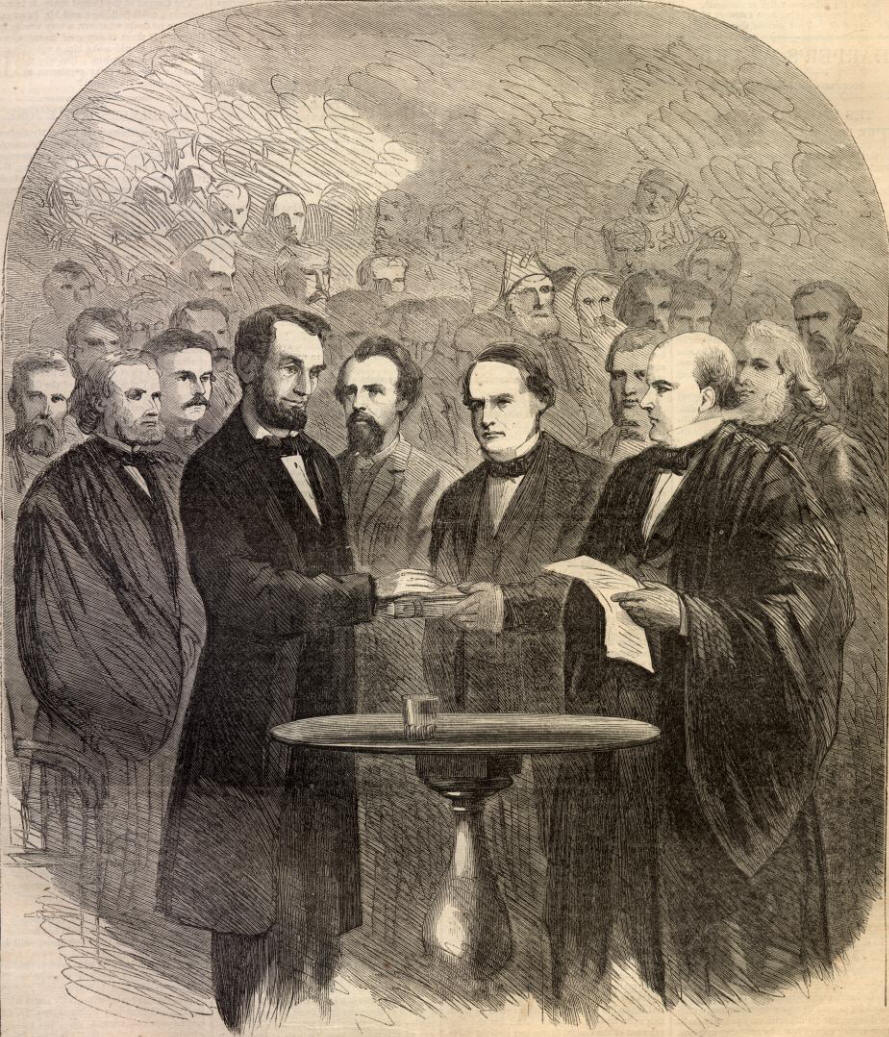
Tipperary's Children
Lincoln and the Civil War

The Irish Brigade
| The Family News Letter Vol. 5 |
|
Articles:
Abraham, Martin, and Paul
The O'Donnell Family
Next: The Irish Catholic Parish Registers |
 Tipperary's Children Lincoln and the Civil War |
 The Irish Brigade |
The following story is the result of five years
of research and my best efforts to properly document the history and events of
those family members who came to America fleeing the poverty and famine of
Ireland in the 1850’s. They came seeking a better life and we are in their
debt. This newsletter is dedicated to them
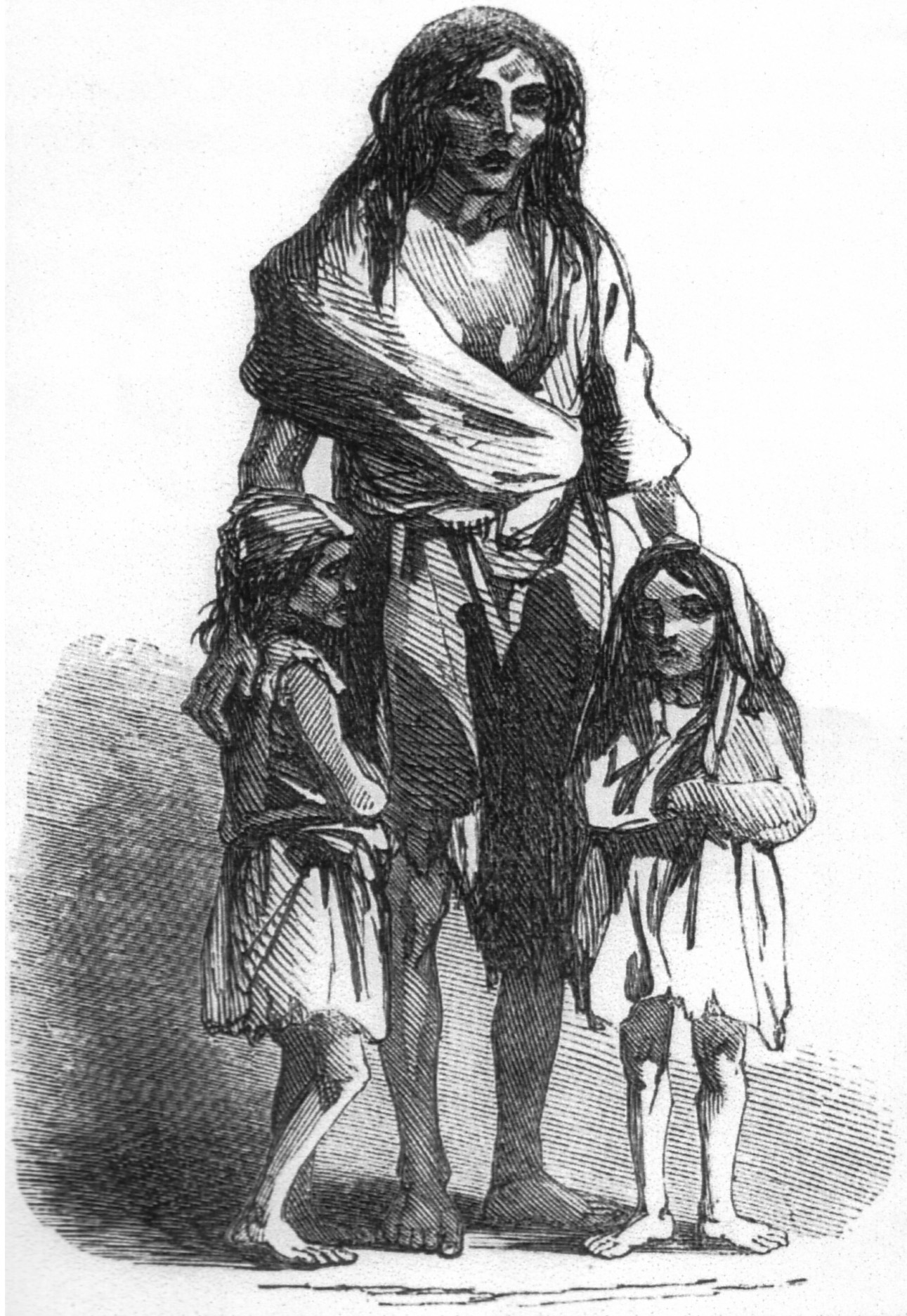 Abraham, Martin, and Paul....and
Michael, and maybe.....John?
Abraham, Martin, and Paul....and
Michael, and maybe.....John?
The Immigration Story Of The Sullivan Brothers
Just when I think I have everything chronologically figured out, something
unforeseen drops out of the family tree that changes everything. To the
best of my knowledge, it was Mary Sullivan that was the first of the Clogheen
family to reach the United States in 1872, and that was based on all the
material researched up until 2010. She would marry James Fleming of
Carrickbeg, Co Waterford Ireland and settle down in Rosendale, NY shortly
thereafter. It was my cousin Maureen, James and Mary's granddaughter who told me
the stories about her Uncle Joe Fleming, his love for literature and gift of the
written word. Maureen along with her brother Donald and sister Patricia
were raised in Plattekill, NY and spent many weekends at the family homestead in
Rosendale, where her Uncles Joe and Bill still resided. One day while visiting her Uncle Joe, she lamented that her
family was so small and wished that it was so much larger. Her Uncle Joe
smiled at her and replied "Maureen, if you only knew. Your family is as
numerous as the leaves on a tree. He was right.
Uncle Joe was a prodigious writer and town historian, who is best known for
recording the histories of the D&H Canal and the Rosendale cement industry. He
worked in various capacities in both industries which by 1900 had seen better
days and reached total shutdown in1907. He later worked with the mining and
construction crews building the New York City water project from 1908 thru 1914
when the project was completed. Of significance to me is his chronicle of
the Fleming and Sullivan family histories, most of which would have passed away
along with those he wished to remember but for his niece Maureen who carefully
safeguarded his works. I expressed my interest several years ago in
learning more about the Fleming family and their connection to the Sullivan
family here and in Ireland, and it was then that she told me about the books he
had written during his later years. Shortly before his death in August
1950, he hoped to fulfill a lifelong dream and sent a transcript of his works to
Iona University in the hope that it would be published. Unfortunately, his
work was rejected and he passed away the following month. One of the
excerpts from the biography of his mother follows:
Martin L Sullivan
In his mother's biography he wrote:
"At the age of five, mother began learning the
dressmaking trade under the jurisdiction of her Aunt Mary (Spotwood) to whom she
remained a constant companion until shortly after my grandfather’s death from an
old injury which necessitated a plate in his skull for many years.
He died early in 1871 and the following June, Mother and her sister Margaret
came to America and located with her Uncle Martin Sullivan on the Strand in
Roundout ( Kingston) NY, where he conducted a general store and operated a small
men’s clothing factory.
Mother and her sister remained with and worked for their Uncle Martin
until they were married. This Great Uncle of mine came to America in the
(Eighteen) “fifties” and worked in New York City at plastering and bricklaying
until the outbreak of the Civil War when he went out with the Old Sixty Ninth
(Irish) Regiment for the duration.
Besides contracting the small pox he also received an abdominal wound which advised his not resuming his trade after being mustered. Coming to Rondout in 1865 he remained in business there until the panic of 1873 when he returned to New York and resumed his trade. This aggravated his wound and he died a short time later.
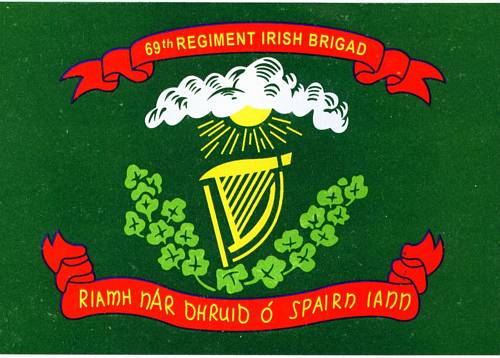
The existence of Martin Sullivan is not new, however
the revelation that he departed Ireland and moved to America challenges long
held beliefs both here and in England where a large segment of the family
resettled. There is no step by step progression when researching someone and
separating fact from fiction is critical. While some pieces of information
bear fruit, others seem to lead nowhere. The details from this entry are more
than I have to work with normally, so now to verify their authenticity by
referring to public records and put his account to the test.
The village of Rondout now part of Kingston, NY was a busy port facility at the
confluence of the Rondout and Hudson rivers chiefly connected to the coal and
cement industries. Easy access to markets in New York City was provided by
river steamers and later by railroad. The post-Civil War population of
Kingston, NY was approximately 6,000 people and fortunately a business directory
still exists for the year 1866
The NY 69th Regiment Irish Brigade
Left: The Rondout business directory for 1866
Below: Strand Street, Rondout, Kingston, NY
The Emigrant Savings Bank Records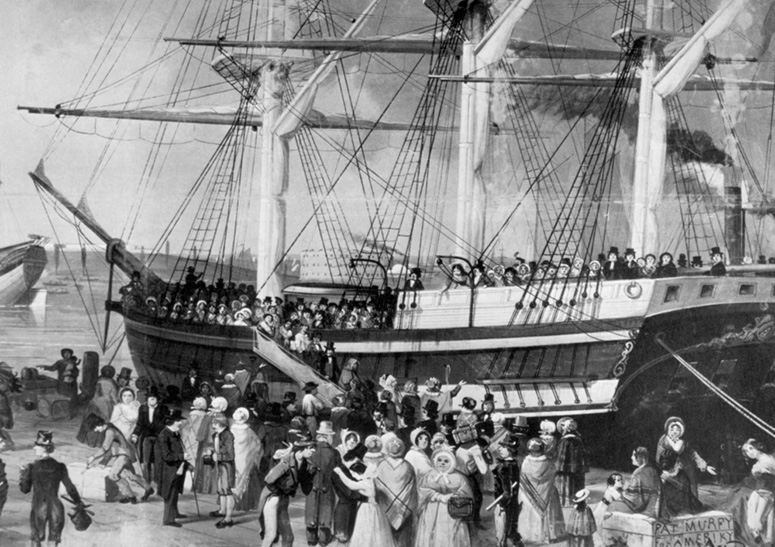
The decades between 1830 and 1850 saw a dramatic
increase of immigrants arriving in New York City. Almost two million Irish
passengers mostly poor Catholics fleeing oppression and famine and with very
limited funds to sustain themselves, disembarked at Castle Clinton in lower
Manhattan. In order to respond to the need to aid transition in their new
home, The Irish Emigrant Society was founded by a group of prominent businessmen
in 1841. By 1849 it was recognized that some form of depository system was
needed in the Irish community for the purpose exchanging sums of money between
North America and the continent of Europe. At the urging of the Archbishop
of New York John Hughes, eighteen of the Society's members contributed shares
towards the formation of The Emigrant Industrial Savings Bank in 1850. The
effort was so successful that by 1857 the bank was the seventh largest in the
country with over 1.5 million dollars in assets. The Emigrant, as it was
popularly known kept meticulous records of each depositor which included Index
Books, Test Books, Depository Account Legers, and Transfer Signature Test Books.
New York, Emigrant Savings Bank Records, 1850-1883 for Martin L O'Sullivan
In 1865, while living at 53 Oak Place in Brooklyn
NY, Martin L. Sullivan opened an account with the Emigrant Savings bank for his
brother Michael. The Test Book states that twenty eight year old Martin, a
Tipperary native, arrived in 1852 aboard The Oregon, is married to Mary
Fitzgerald and has three children. Five highly informative pieces of vital
information all contained in one line of information: Name , Age, Nativity,
Arrival, and Relationships which can be cross-referenced. In some cases
this may be the only information available that can be used to trace an
immigrant ancestor back to their native Ireland.
Overview - 1860
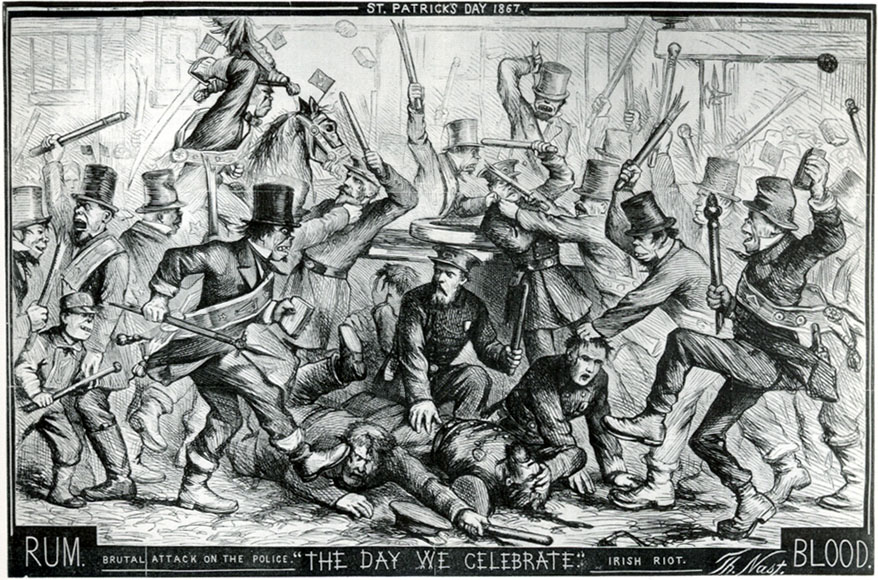 Thomas
Fitzgerald arrives in Boston, Massachusetts with his wife Alice and four
children on
20
Sep 1849 aboard the passenger ship Waldron. They travel to
New York City and take up residence there. Landing in Boston and traveling
overland to New York is more economical than traveling an additional day or two
by sea and many Irish refugees follow the same plan. Some poor farmers
evicted from their homes by landlords were offered passage to Canada or New York
but most either paid their own way or were helped by family already in America.
Thomas a stone cutter by trade and his family have traveled from Clonmel,
Tipperary Ireland and it isn't long before he starts a small but profitable
grocery business.
Thomas
Fitzgerald arrives in Boston, Massachusetts with his wife Alice and four
children on
20
Sep 1849 aboard the passenger ship Waldron. They travel to
New York City and take up residence there. Landing in Boston and traveling
overland to New York is more economical than traveling an additional day or two
by sea and many Irish refugees follow the same plan. Some poor farmers
evicted from their homes by landlords were offered passage to Canada or New York
but most either paid their own way or were helped by family already in America.
Thomas a stone cutter by trade and his family have traveled from Clonmel,
Tipperary Ireland and it isn't long before he starts a small but profitable
grocery business.
According to the Census of 1860 Thomas Fitzgerald lives in the 17th ward of New York City, with his wife Alice sons Maurice, Edward, and Thomas, a married daughter Mary and son in law Martin O’Sullivan. Thomas is a grocer with a personal estate of $300, a tidy sum in pre-civil war New York City. The 17th Ward, now known as the East Village was a very different place then, considered a mixture of upscale middle and working class by most residents of the day. Thomas would be considered as part of the growing merchant class, in contrast to the general impression that all Irish immigrants were poor, uneducated, unruly drunkards as depicted by the Thomas Nast cartoon to the left.
Martin Sullivan arrives in New York on
27 May 1851
aboard the passenger ship Oregon and settles in Ward 18 just above the 14th
street boundary.
In 1857 Martin a plasterer by trade is
listed at 255 East 15th Street a location between what is now 1st and 2nd
Avenues.
Two blocks over at 249 E. 13th Street he probably purchases his groceries from
the local store owned by Thomas Fitzgerald and family. It isn't
clear whether or not Martin knows the family from his days in Ireland as Clonmel
and Clogheen are only 25 km or 15.5 miles apart, but it can be said that
Tipperary and Cork people seek out their own. He courts and marries Mary Fitzgerald,
the only daughter of Thomas and by 1859 he is living at the same address of 249
E. 13th Street with his wife and child.
Civil War and Bloody Riot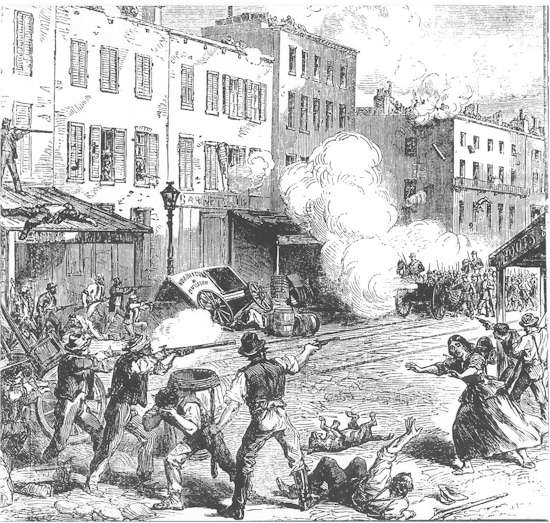 -
1863
-
1863
At the outbreak of war in 1861, New York residents
rushed to volunteer for service in the defense of the Union. However, by
1863 the increasing mortality rate on the battlefield and the severe drop in the
amount of volunteers needed to fill the ranks, left the Union Army severely
depleted of manpower. In order to reach expected levels, the Congress
passed The Civil War Conscription Act of 1863. Each State was required to
draw names from a list of able bodied men between the ages of 20 and 45 years of
age by way of a draft lottery. By then New York City is a sharp contrast
of haves and have nots and there were simmering resentments against the
merchant and upper classes who for the price of a $300 exemption could buy their
way out of service. Fernando Wood, former Democrat mayor as well as some
city newspapers like The New York Herald actively promoted the secessionist
cause and anti abolitionist fever. The city's largest ethnic group was by far
the Irish, which was over 200,000 or 25 per cent of the total population by
1860. Irish women worked in the factories and as servants, while the men
labored on the docks and warehouses and menial jobs. Unlike most Northern
cities, support for the Union cause in New York City was shaky especially among
the poor Irish working class. As the tide of war slowly began to turn in
favor of the Union, President Lincoln seized the opportunity to proclaim that
slaves in the Confederate States would be considered free and liberated from
ownership. This was a calculated move by the President to pressure the
rebellious states to put an end their participation in the secession and at the
same time wreak havoc on the Southern economy which was faltering after almost
two years of war. But there were unintended consequences for the northern
economies as well. Many Irish laborers were already the bottom of the
socio economic underclass and felt threatened by the newly proclaimed status of
nearly three million slaves which would surely compete for lower wages.
Lower wages, a requirement to serve which would exempt the gentry class,
unwillingness to fight for the cause of abolition of slavery, and the loss of
Southern markets and jobs to war, was a perfect mixture of rage which was
looking for an opportunity manifest itself. And so it did on July 13,
1863.
The first draft lottery occurred on July 11 without
incident, however when the second lottery occurred on July 13 1863 at the
Provost Marshall's office on 47th street and Third Avenue a large mob had
already gathered. It is widely believed that the outbreak of violence
began when the members of the Black Joke Fire Department arrived and incited the
crowd to destroy the building. It isn't necessary to follow a step by step
progression of what takes place between Monday July 13 and Thursday July
16 Vodrey does it much better that I could, but it is critical for the purposes
of this article to document the incidents that occurred within the eastside
neighborhoods of Gramacy Park and Stuyvesant Square.
A more detailed account of what happened next may be found here:
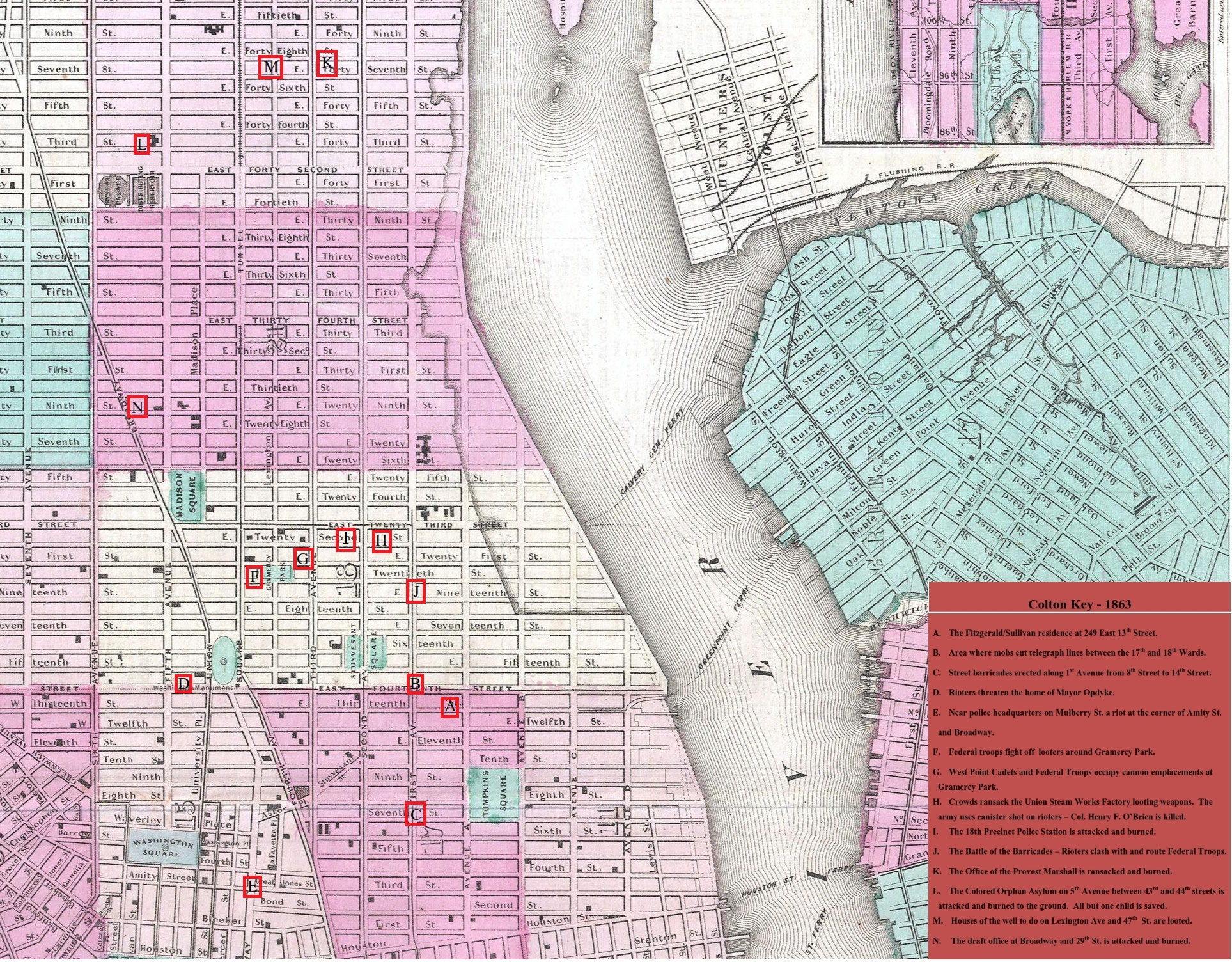 Blood in the Streets: The New York City Draft Riots
Blood in the Streets: The New York City Draft Riots
The Cleveland Civil War Roundtable
By William F.B. Vodrey
Right: To the right is a copy of the 1863 Colton Map for New York City which uses an extrapolation of data to project a visual account of the events that took place mostly in the 15th 17th 18th and 21st precincts from July 13th through 16th 1863.
Analysis
So far I’ve provided some historical perspective of historical events and family statistics up until the morning of 13 July 1863 when crowds gathered before the Office of The Provost Marshall to protest the draft lottery. I did not understand why Martin Sullivan was living in Brooklyn in 1865 and further more why Thomas Fitzgerald is nowhere to be found. By using the information recorded about events that had taken place during the draft riots and applying them to the New York City Colton Map of that same year it became clear that the chaos during those four days was all around the dwelling at 249 East 13th Street.
It was believed at the time that events taking place during the riots were random acts of violence perpetrated by a leaderless mob, but most historians now reject this viewpoint. At the very beginning of the disturbances there were concerted efforts to block communications by severing telegraph lines as was the case on Second Avenue and 8th Street. Many police stations were turned into isolated island fortresses forced to confront crowds as much as ten times their numbers. Some of the most vicious fighting that took place over the four day period was in the streets of the 17th, and 18th wards along 1st Avenue and 19th Street at the battle of the barricades. After using canister shot to disperse rioters Colonel Henry F. O’Brien was overcome by the crowd and beaten to death. Further up Second Avenue mobs attacked and looted weapons from the Union Steamworks Arsenal where rifles were being manufactured for the war effort. Very near to that location the 18th Precinct Police Station was also attacked and set ablaze along with adjacent buildings with Police suffering many injuries. To the south on 5th Avenue and 14th Street the residence of Mayor Opdyke was damaged and if not for the intercession of Tammany officials would have suffered the same fate.
Paddy's Lamentation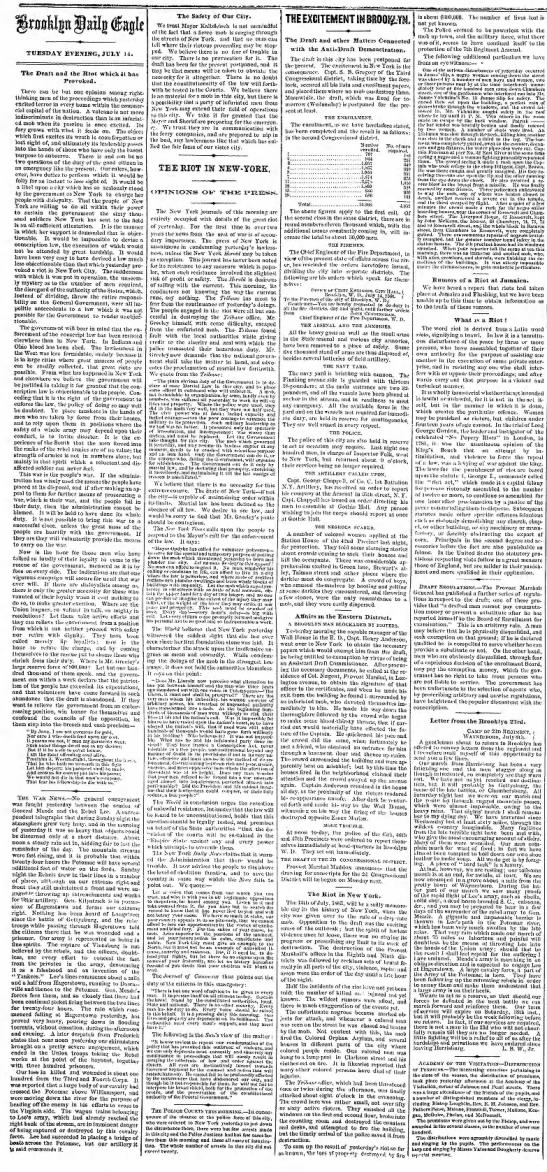 The Brooklyn Eagle July 14, 1863
The Brooklyn Eagle July 14, 1863
Well it's by the hush, me boys, and sure that's to hold your noise
And listen to poor Paddy's sad narration
I was by hunger pressed, and in poverty distressed
So I took a thought I'd leave the Irish nation
Here's to you boys, now take my advice
To America I'll have ye's not be going
There is nothing here but war, where the murderin' cannons roar
And I wish I was at home in dear old Dublin
Well I sold me ass and cow, my little pigs and sow
My little plot of land I soon did part with
And me sweetheart Bid McGee, I'm afraid I'll never see
For I left her there that morning broken-hearted
Well meself and a hundred more, to America sailed o'er
Our fortunes to be made we were thinkin'
When we got to Yankee land, they shoved a gun into our hands
Saying "Paddy, you must go and fight for Lincoln"
General Meagher to us he said, if you get shot or lose your head
Every murdered soul of youse will get a pension
Well meself I lost me leg, they gave me a wooden peg,
And by God this is the truth to you I mention
Well I think meself in luck, if I get fed on Indian buck
And old Ireland is the country I delight in
With the devil, I do say, it's curse Americay
For I think I've had enough of your hard fightin'
Aftermath
The New York Public Library has a marvelous collection of digitalized information that I included in this newsletter in order to draw conclusions about what took place in the East Village of New York City during the month of July 1863 and how it radically changed the fortunes of the Fitzgerald and Sullivan families. To the left is a graphical image of the East Village as it appeared in 1862, the year before the Draft Riots and probably the most accurate representation of life as it was in two dimensional form. The NYC Fire Insurance, Topographic and Property Maps were used by insurance companies to record the composition, purpose, and boundaries of structures for the purpose of indemnity against loss. Those maps were also used no doubt by the fire departments to reduce the risk of catastrophic fires such as the 1835 conflagration which destroyed much of lower Manhattan. It has been a valuable asset in helping to place the families and determine what might have caused them to flee to Brooklyn.
For our purposes Plate 43 of The William Perris Maps contains an overly key added in order to interpret the nomenclature and purpose of the neighborhood surrounding East 13th Street between 1st Avenue and Avenue A. The Building marked 249 was a dwelling of brick, probably two stories with a non-coped roof of slate or metal and a store on the first level. It should be noted that the buildings behind No. 249 seem to run counter to the Commissioner’s Grid Plan that was first proposed in 1811. They are the ruminants of the structures that ran adjacent to the demapped portion of Stuyvesant Street which ran from Broadway just south of 8th street all the way to the East River. St. Mark’s Church is the most prominent building along the street and like the structures in the 13th Street map runs counter to the grid. It is one of the oldest paths in Manhattan, owing its existence to Peter Stuyvesant Governor General of New Netherlands who owned the original bowery (bouwerij) or farm.
The evidence points to the probability that the grocery
business on East 13th Street was ravaged by the mobs during the four
days of unrest. Thomas Fitzgerald’s identification with the merchant class,
however humble his business might have been, most certainly made him a target of
the crowds wrath. Not only did the Fitzgerald and Sullivan families lose their business,
but they were homeless as well. The New York State Census for 1865
shows Martin Sullivan living in Brooklyn , married with three children, and
lists his occupation as Liquor Dealer. A far cry from his occupation as a
plasterer and probably necessitated by his abrupt departure from Manhattan only
months before. The Fitzgerald family appears to have fled from Manhattan
to Brooklyn as well, but this was a temporary arrangement because later that
year both families would find themselves in the small but prosperous town of
Rondout along the Hudson River in Ulster County.
Rondout New York
The First Federal Income Tax
On December 20, 1860 South Carolina became the
first state to secede from the United States. With the beginning of hostilities
in Charleston Harbor, the federal government faced with more secessions and the
prospect of war, debated various methods of raising revenues for prosecuting
war. Up until 1860, most revenue was based on tariffs collected on
imported goods. But the economic downturn of 1857 left the United States
as well as Europe in a depression and tariffs alone would not reduce an already
staggering Federal deficit, let alone finance an army. President Lincoln
and his Cabinet proposed a threefold approach to the problem by increasing
tariffs, establishing a property tax, and a tax on income. It is the last
of these for which I am interested because it lists Martin L O'Sullivan of the
town of Rondout in Ulster County, New York as a peddler (4th class) of clothing
and subject to an assessment of ten dollars in taxes. So it can be
determined that he moved his family from Brooklyn to Rondout sometime in late
1865 to early 1866.
Conclusions
Joseph
Fleming was born on July 4, 1881 in Rosendale , NY. to Mary Sullivan and James
Fleming. Although his historical references to his Great Uncle Martin have
some inaccuracies, there are also portions which can and have been verified by
me.
“This Great Uncle of mine came to America in
the (Eighteen) “fifties” and worked in New York City at plastering and
bricklaying until the outbreak of the Civil War
Martin Sullivan entered the
Port of New York on 27 May 1851 on the vessel Oregon. He was part of the
exodus of the Famine Irish Immigration of 1846 - 1851.
“he went out with the Old Sixty Ninth (Irish)
Regiment for the duration.
Knowing what I do about Mr. Fleming and his
proclivity for accuracy, I have to conclude that he relied on second hand
information he felt he could trust. There is a possibility that the family
in Rosendale had lost touch with Martin’s family so it may account for the fact
that he actually lived well past the year reported by Joseph Fleming.
I have extensively
researched the claim that Martin Sullivan served with the 69th
Infantry Division or New York Irish Brigade as it was known, and have had no
success in confirming the claim that he ever served in that group or in any
other *NY State Militia during the Civil War. Furthermore I was unable to
find his name on any of the lists of those registered for the draft or the
veteran pensioner lists. This claim seems to be without merit.
"Coming to Rondout in 1865 he remained in business there until the panic of 1873 when he returned to New York and resumed his trade. This aggravated his wound and he died a short time later."
Martin and his family moved to Rondout in late
1865 and managed a clothing business on the Strand until about 1878 or 1879
when they returned to New York City where he resumed his trade in the building
industry. He passed away on 22 December 1885 from kidney failure.
Vitals For Martin L Sullivan
Born: Clogheen, County Tipperary, Ireland 20 June 1832
Arrived: 27 May 1851 • Port of New York - Oregon
Citizenship: Common Pleas Court of New York 27 April 1857
Married: 1858 - Mary Fitzgerald
Died: 22 Dec 1885 • Manhattan, New York, New York, USA
Burial: 49-02 Laurel Hill Boulevard Woodside, NY 11377
Coisricthe: Section 7 Range 19 Plot F2
Children of Martin L Sullivan and Mary Fitzgerald
| Margaret Elizabeth Sullivan | b. Aug 1859 New York, NY | d. 29 May 1915 Brooklyn, New York |
| Mary Elizabeth Sullivan | b. Jun 1862 New York, NY | d. |
| George Martin Sullivan | b. Jan 1865 Brooklyn, New York | d. |
| Catherine Mollie Sullivan | b. 1867 Rondout, New York | d |
| Thomas Sullivan | b. 1871 Rondout, New York | d. |
| Catherine Sullivan | b. Oct 1877 New York, NY | d. 11 Oct 1934 Queens, New York |
| Eleanor Sullivan | b. Mar 1879 New York, NY | d. 16 Apr 1928 Queens, New York |
| Helen Sullivan | b. about 1885 New York, NY | d. |
United States Census New York State Census
1860 United States Federal Census New York, State Census, 1855
1870 United States Federal Census New York, State Census, 1865
1880 United States Federal Census New York, State Census, 1875
Paul Sullivan
The story of Paul Sullivan seems to begin with an ending, but like everything else I've uncovered, this is just part of the story. Several years ago, quite by accident I might add, I came upon an admission form for the alms house on Blackwell Island NY.
The form is an admittance for one Paul Sullivan of Clogheen, Tipperary a plasterer by trade. He is widowed, destitute, ill, and recently released from Belleview Hospital with few prospects. This was for all intents and purposes, the end of the line for this man and he was here to die. At the time I viewed this as merely coincidental because as far as I knew the Paul Sullivan in our family was still in Ireland. And so with nothing to link him to our family and very little else to go on, I dismissed it as pure chance. To this day I am irritated that I did not file this away for future research like I would normally do but regardless, I arrived at the same destination if just a little bit late.
It was when I began
extensive research on Martin Sullivan that I uncovered a bit of information that
unmistakably linked them together as family. Martin first appears in the New
York State Census of 1855 in Saugerties, Ulster County, NY. This link (NYSCI1855_U-Saugerties-ED2-P53)
shows him living with a Jerimiah Sullivan (possibly an uncle) in addition to
Timothy and Michael Sullivan who are boarding with him. I am not sure what the
relationship if any is with Timothy, but Michael will be covered below. Sometime
after June 1855 for reasons still unknown, Paul his wife and two children would
leave New York City and relocate to Cabot Street in Roxbury, Massachusetts. On
May 31 1860, Paul Sullivan becomes a citizen of The United States and it was his
brother Martin who would sponsor him.
Paul Sullivan’s story has many twists and turns and trying to place it all in a cohesive narrative has caused me more than a few frustrating moments which have taken the better part of a year to sort out. One such frustration occurred after realizing I spent so much time investigating another Paul Sullivan who was the same age also having a wife by the name of Mary. My problem was that they both lived in the same area of Roxbury, Massachusetts at the same time. Both Pauls lost their wives within a few years of each other also making it difficult to discern between the two families. “Our” Paul disappears after the death of his wife Mary Lynch Sullivan in April of 1861 and does not reappear until 1868 in the city of Cincinnati. There is no record of draft by either the States of Massachusetts or Ohio for the years 1863 through 1865, or any record of enlistment found in the Federal records. Remembering that he listed a sister living in Cincinnati on the Blackwell Island Almshouse Form, it begins to make sense that he might uproot and move to be with a family member. Did he try to evade the draft? That is a question that may never be answered. He would reside there from 1868 through 1871 when he again returned to New York City.
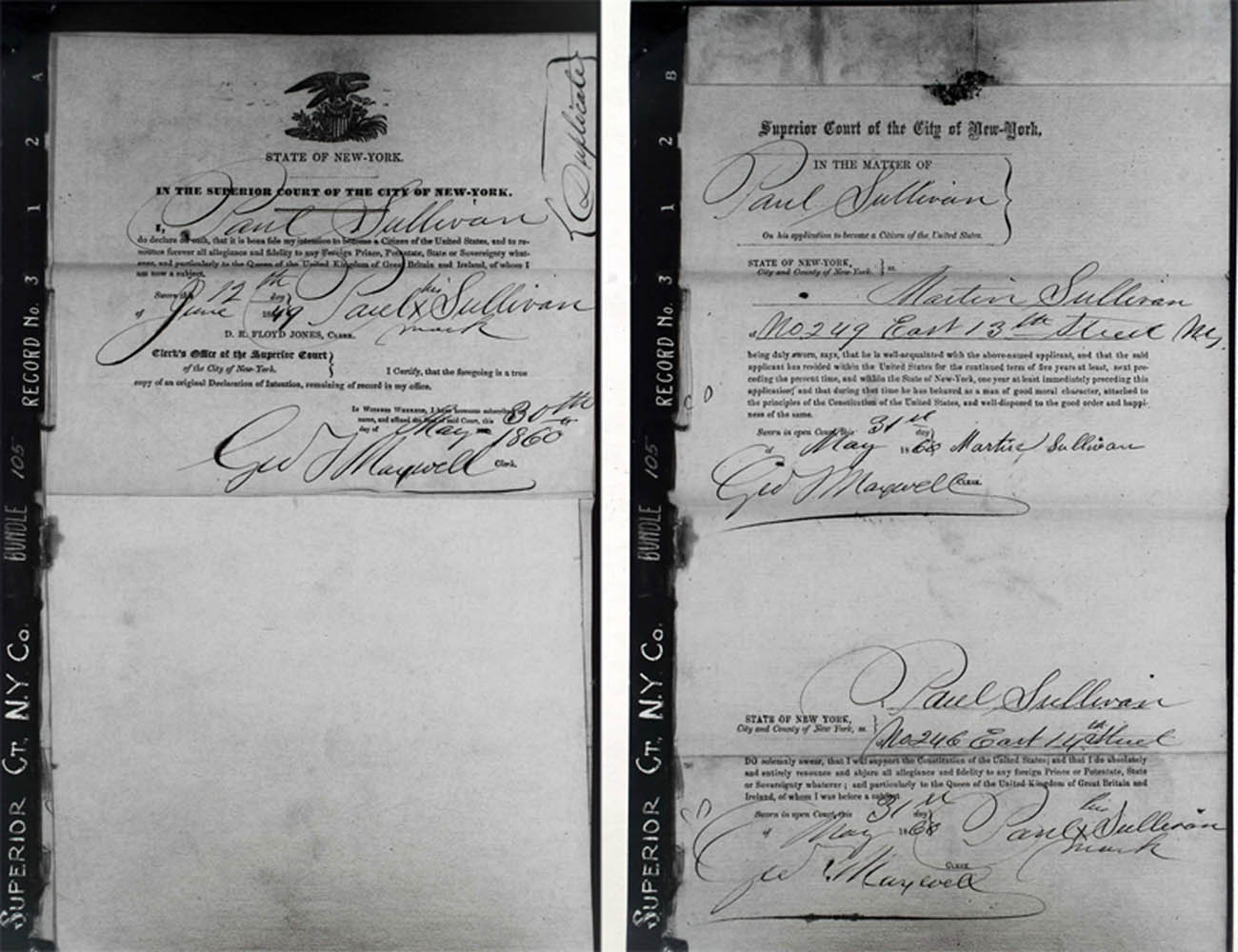
Equally disappointing is the lack of information
concerning his two sons Martin and John who were ten and six in 1860 and seem to
disappear after the Massachusetts Federal Census that same year. There are
tantalizing but unsubstantiated pieces of information that John may have joined
the army and moved to a western outpost finally appearing as a retired soldier
in the 1910 Federal Census taken in Portland Oregon. I believe that Paul’s
daughter Margaret went to live with Martin and Mary Sullivan after the death of
her mother and was adopted by them. Margaret is listed on the 1865 New
York State Census when she went to live with her Uncle Martin in Brooklyn. She
is also listed again in the 1870 Federal Census during Martin Sullivan’s time on
the Strand in Ulster County. James, the youngest child would die in infancy in
1860 at 13 months.
So how does a widower with three children find himself
back in New York City alone and in such a dire situation. Sometime around
1874 Paul returns from Cincinnati and begins again to ply his trade in
construction. I find no listing in the New York City directories after 1878
when he seems to disappear altogether, until he finally shows up at the
Blackwell Island Almshouse in 1887. He had recently been released
from Belleview Hospital where he had been treated for an unspecified illness.
I can only speculate that it might have something to do with alcoholism
since it was so prevalent in those days, and it might have some connection with
the hard life he seemed to have experienced. So with no
family, no source of income, and no prospects, he becomes a
ward of the City of New York. 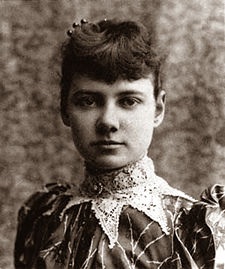
Coincidently also in 1887, a young woman newly engaged as a reporter for
the New York World accepted an assignment by Joseph Pulitzer to investigate
conditions at The Blackwell Island Women's Asylum (above right).
Elizabeth Jane Cochrane, using the pseudonym
It's difficult to tell if the Nellie Bly expose
had any effect on events, but evidently Uncle Paul possibly lived out the rest
of his life at Blackwell Island. At some point I will find the time to
examine the City records for Blackwell Island and find out Paul Sullivan's fate.
Finding a burial site is important to me for *Coisricthe, but realistically I
believe that finding his resting place will be a daunting, if not
impossible task. Paul Sullivan rests with the multitude of forgotten and
turned out souls from another time. They gave all they had to give to feed the
engines of their adopted country until there was nothing left to give.
Just a small tribute to Paul Sullivan and all those like him. Téigh le
Dia
*Coisricthe is an act of consecrating the
burial site of those that came to America from the town of Clogheen. Soil
from the burial site of Fr. Sheehy in Shanrahan is added to the grave as a
remembrance from whence they came.
Update for Paul Sullivan - 31 March 2019
When I initially researched Paul Sullivan and compiled this newsletter almost
two years ago, I knew there was more to this story. In fact I have become
obsessed by it. With the commitment of Paul Sullivan in December of 1887
to the hell that was Blackwell Island there were few if any prospects for his
eventual removal. I was convinced that it was the end of the line and his
problematic life had finally consumed him and all that was left was to locate
his grave among the countless societal castoffs resting in pauper’s graves. As
I have done with almost all of our family here in America, I was determined to
find him and perform Coisricthe, and
honor him for his courage and sacrifice regardless of whatever shortcomings he
might have had in this life.
Recently I came across the digital records of the City of New York, and among
them were the archived files for Blackwell Island which included admissions,
discharges, and deaths as well and the census forms from
1758 through 1952. To say I was delighted that this source was suddenly at
my disposal would of course be a tremendous understatement and I was determined
to take advantage of this windfall. The obvious choice would be to examine
the Death Leger (nynyma 0008 225 Death Ledger 1884-1900) and
fix the date for his demise. Surely I would only need to search two or three
years of records and there I would find his name and complete the circle of his
life. As I painstakingly searched 1888…1889…1892…1900, nothing. He would
have been 74 by that time, not an impossibility, but not likely for a man in his
condition. Is it possible he did not die on Blackwell Island, hopefully he did
not, and was it possible he was discharged at some point in time. Turning
to the discharge leger
(nynyma 0008 222 Discharge Ledger 1888-1893 pg 33) I did
not have to go very far until I found his name among the discharged patients in
June the following year. So he did not die there, but where did he go from
there?
Genealogy can at times be very challenging, and I am reminded that I have been
engaged in finding my father’s family in one form or another for thirty years
now and considering that I began with almost nothing, I am grateful be in the
position I am in today. I will continue to keep at this with the hope that
there is more out there to add to what I already have. It seems that I
have much less time for writing than I would choose to have, so as I wrote most
of this on the beach in Cancun where there are few distractions and continued to
fine tune it once I returned home, I now find there are now additions to my
additions.
Christopher Sullivan my grandfather, lost his father when he was but twelve
years old, and the following year his sister left for America to join her Uncle
Martin on the Strand on what is now Kingston, New York. His brother
Edward would follow a few years later. Surely he must have heard the stories
about his uncles Martin, Paul, and Michael in the New World and made a choice to
follow in their footsteps. By the time he arrives in Boston in April 1885,
Michael is dead, Martin would pass away eight months after his arrival, and Paul
is languishing somewhere in New York City. I can’t be sure how much
contact he had with Martin’s family but eventually he moves nearby to the family
home in Long Island City as it appears on his marriage record in 1894.
Oddly enough, there is a detail on the marriage register that has always
bothered me since I found it about a dozen years ago. My grandmother’s
parents are listed as James and Mary and my grandfather’s parents are listed as
Margaret and Paul instead of William. Why so? Surely
Christopher knew his parent’s names, or was it perhaps intentional. Was he
the last remaining family member of his generation, and was this how his nephew
chose to honor him at his wedding. Redemption? Maybe I’ll have an
answer someday.
Vitals For Paul Sullivan
Born: Clogheen, County Tipperary, Ireland 25 June 1826
Arrived: 1848
Married: About 1849 - Mary d. 20 Apr 1861 Roxbury, MA
Citizenship: Superior Court of New York 31 Aug 1860
Died: Unknown
Burial: Unknown
Children of Paul Sullivan and Mary Lynch
| Martin Sullivan | b. 1850 New York, NY | |
| John Sullivan | b. 19 Aug 1853 New York, NY | |
| Margaret E. Sullivan | b. 15 Mar 1856 Roxbury, MA | d. 10 Sep 1893 Boston, MA |
| James Sullivan | b. 6 May 1859 Boston, MA | d. 25 Aug 1860 Boston, MA |
United States Census New York State Census
1850 United States Federal Census New York, State Census, 1855
1860 United States Federal Census
1880 United States Federal Census
Michael Sullivan
There is less documentation when it comes to Michael Sullivan, at least as of this newsletter (12/16) but there is hope that more is to be found in the New York City Municipal records. Michael was born on or about October 1 1828 to Martin Sullivan and Margaret Lonergan and came to America in 1854. The New York State Census shows him living with his brother Paul and his wife Mary in the 18th Ward of Manhattan and oddly enough in Saugerties a week earlier in the residence of Jeremiah Sullivan along with his brother Martin. I will update Michael Sullivan's history as it becomes available and the information that I have can be verified.
Vitals For Michael Sullivan
Born: Clogheen, County Tipperary, Ireland 1 October 1828
Arrived: 1854
Married: About 1864 - Ellen Dannin
Civil War Draft 1864
Died:
New York, Emigrant Savings Bank Records, 1850-1883 for Michael O'Sullivan
John Sullivan
There is a hint of evidence that perhaps older brother John had immigrated to Boston as well, but the only documentation that is available for reference at this point is one death record. The recorded parents appear as Martin and Margaret which maybe a coincidence or perhaps not.
Record of Death in Boston 13 December 1887
Catherine or Margaret Sullivan?
One of the sisters, either Catherine or Margaret
immigrated to New York and eventually resettled in Cincinnati, Ohio as the
Blackwell Island Admission indicates. As of this writing I am unable to
determine which sister it was or what her married name might have been. It
is documented that Paul Sullivan lived in Cincinnati between 1868 and 1871 after
the death of his wife in Massachusetts.
The O'Donnell Family - In hoc signo vinces
I love a good mystery and I love the challenge of
uncovering and putting together minute details with the hope of creating the
larger picture. There are not many keepsakes passed on through my father's
side of the family, but what I do have I treasure. About twenty five years
ago my mother gave me a small envelope with some items and among them was a
cemetery deed and a badly faded family photograph. Handwritten at the
bottom of the photograph were the words "The O'Donnells and Aunt Maggie".
Now I am not certain as to the origins of the photo but I suspect that it was in
the possession of my Aunt Mary since she was the guardian of the family archives
so to speak. She knew a good deal of the family history and it was my
great misfortune not to take the opportunity to ask about our family and of her
experiences before she passed so we could preserve what she knew.
In the early summer of 1968
following the death of our father, my mother suggested that we visit with the
folks in the Boston area in order to thank them for their support and to visit
with those who could not make the funeral. I was of course more than
willing to oblige having just received my driver's license two months previously
and considered it a chance to show off my skills at long distance driving.
Mother and I would begin the Tour de Boston
by spending that Friday night with Aunt Mary. Being newly minted at the
wheel, I persuaded my mother to allow me the keys to the car for an hour so I
could see the neighborhood and surprisingly she agreed. There must have
been a lot to talk about and I was not to be privy to the conversation. It
was not long after this occasion that I first saw the cemetery deed for my
grandparents. Although I did not realize it then, it could not have had a
better fate.
My mother told me early on that my grandmother was an
O'Donnell and that she and my grandfather Christopher had died from tuberculosis
when my father was about eight years of age. We would gather around
the dinner table on Sunday afternoons and all manner of topics were discussed.
My father would almost lovingly talk about his years in St John's home for boys
in Brooklyn where he and his two brothers were placed after the death of
their parents. But any questions about my grandparents would go
unanswered. Later in life I would find a similar reticence from my Uncle
Joe and it would be left to my mother to fill in the voids.
Mother told me that Catherine and Christopher were buried at Calvary Cemetery in
Maspeth, NY along with sister, Mary O'Donnell and their son Paul Sullivan. That
was the end of the story, or so it seemed at the time.
What ever became of O'Donnell family in the picture I would ask myself while gazing at a moment frozen in time. I would spend the next twenty five years attempting to put together the scanty details which would give life to those in the picture and beginning with what little I had about my father's family, I decided to see what I could find in the public record.
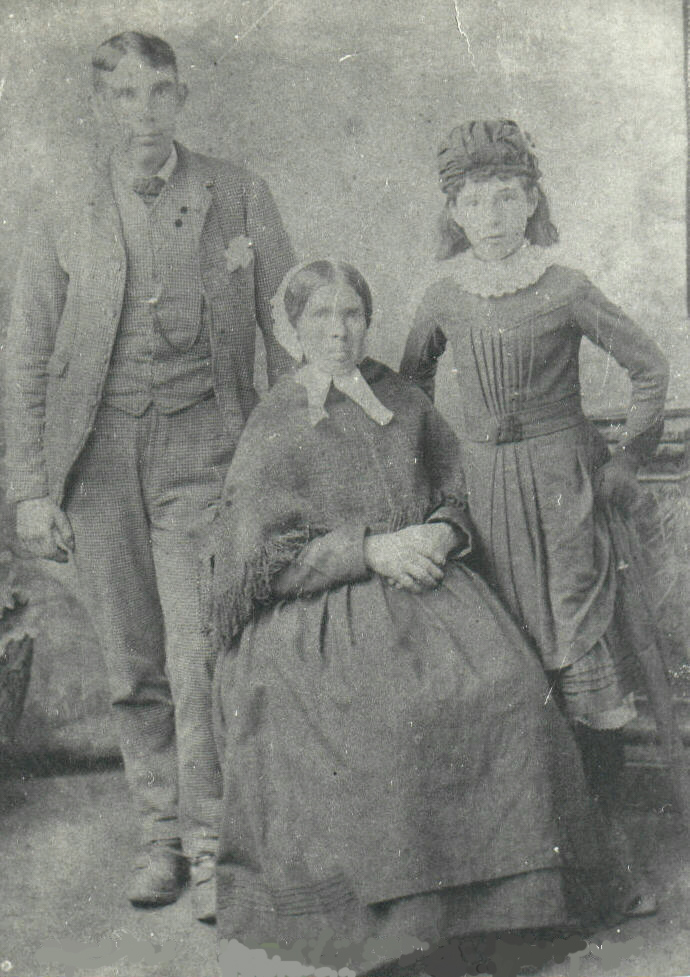
Catherine O'Donnell had two sisters. Mary, who was married to Patrick Mulcahy and died in January of 1899 is on the cemetery deed. Margaret, the young girl in the photograph to the left was the youngest of the three. Once I was able to find the death certificates for Catherine and Mary (see Vital Documents Index) I learned that their parents were James O'Donnell and Mary Coughlin. Using a combination of city directories and birth certificates, I was able to find Christopher living in Brooklyn between the years 1898 until his death in 1912. Although there are no known birth certificates for Arthur or Joe Sullivan, I do have their Baptismal records. Those were obtained by using the address of the residence and its proximity to the nearest church. That still left William and Mary unsourced until, through a lucky break on William's WW 1 draft card, listing his birthplace as Long Island City, NY. It is on those Baptismal records from St Mary Church in Long Island City that the names of Catherine's sisters appear as sponsors.
Margaret Sullivan was
a mystery to me and as of 2004 all I knew about her was that she was a sponsor
for my uncle William Sullivan at his baptism. At this point in time it is
still unclear to me just when Margaret O'Donnell immigrated to the United
States, but I believe she was not much more than 15 years old. At any
rate, it appears that all three sisters were here to stay and employed by 1892.
The details of how I found Aunt Maggie were covered in an earlier newsletter
(see The
Lost Child Vol 2), but as always it seems
there is always so much more to her story. Was this the entire family, or
perhaps, were there brothers as well.
Shortly after the death of her husband Edward
Sullivan in November 1906, Margaret and her son William left Staten Island New
York and move to Worcester Massachusetts and they were counted in the 1910
census. Massachusetts records indicate that she had remarried, and that
she and her husband George Graton have two sons Burton and Robert. The
connection to Worcester Massachusetts was unclear at the time, but I knew it was
probable that she already had connections there and she had prospects for
employment were good. That being the case, all that remained was to find
the link in her past. It would take the convergence of two sources of
information occurring almost ten years later that would help me to complete my
grandmother’s family tree.
In May of 2016 my brother Ed emailed an almost forgotten copy of a letter
that had been stored in his files for thirty five years. The letter (below)
was written to our mother sometime between April and July of 1977 by Mollie
(O'Donnell) McNeil confirming that indeed she was related to the family of
Catherine O’Donnell. Our mother had inquired about the O’Donnell family through
my Aunt Mary, who apparently very familiar with her extended family and more
than willing to help reestablish ties. In retrospect, I think that my brother
and I had something to do with mother's approach to Aunt Mary because at the
time we both had questions about our father's family that she was unable to
answer and Aunt Mary had the answers. It was widely accepted that the O'Donnell
family had their roots in the town of Clonmel, County Tipperary and that may
have been based on what appears on reverse of the picture that appears on the
right. This is a fair assumption as the towns of Clogheen and Clonmel are a mere
26km apart but that will change as access to the Irish Church records becomes
available later in 2016.
I honestly didn't think I had much
of a chance of finding out much more than was in the letter as all the
principles had long since passed and along with them any help in finding out
more but I would press on anyway. In October of that same year using the
information in the letter I came upon what appeared to be a match in one of the
family trees listed in Ancestry. The Mary McNeil who appeared in the
McNeil tree was born Mary Lillian O'Donnell in Southborough, Massachusetts on
19 August 1892. As the letter states, she had a younger sister Josephine
who passed away in 1971. But most significantly Mollie's grandparents were
listed as James O'Donnell and Mary Coughlin, an exact match to my tree.
Our family trees complement one another in that the McNeil tree documents the
male side of the O'Donnell family while Tipperaryschildren gives substance to
the female side of the family. If only I could trace them back to their
Irish roots.
The Catholic Parish Registers of Ireland - NlI
An incredible event for genealogists took place at the end of 2015 making it possible for family researchers outside of Ireland to trace their lineage through the National Library of Ireland. I came across the new database records in March of 2016 while using Ancestry and decided to go straight to the NLI source. Needless to say I have been very busy tracing Sullivans, O'Donnells, Mallons, and Duffys since that time. I plan to devote more time to the Irish Catholic Church Records in the next newsletter but for now it has allowed me to span the gaps in our family history.
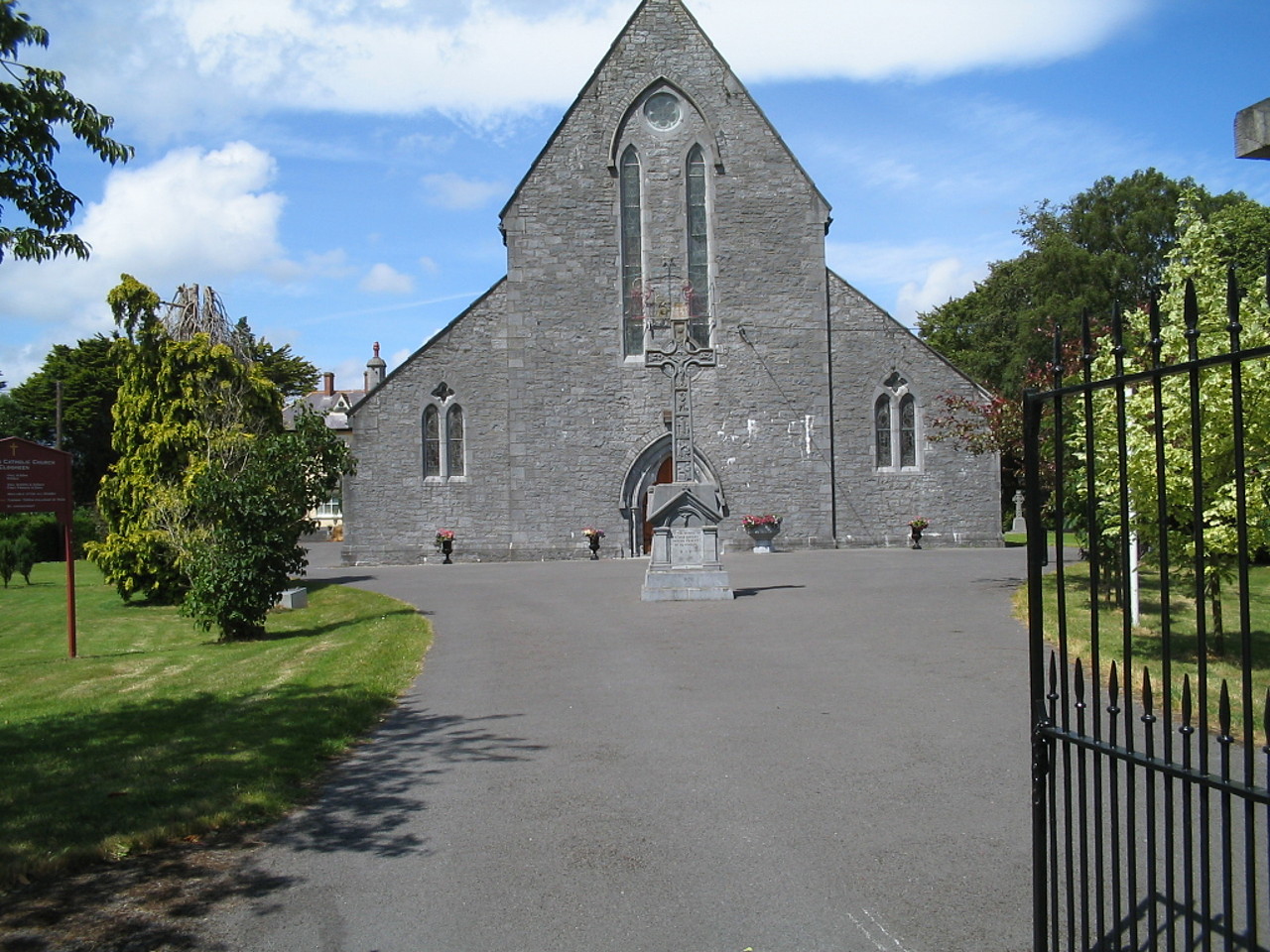
The family lineage can now be traced back one more
generation to James O'Donnell and Bridget Lonergan of Clogheen, County Tipperary
Ireland. The Lonergan name is
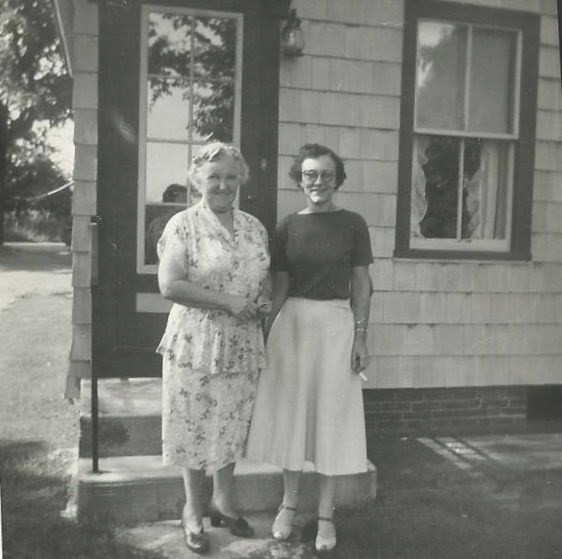 Left: Mary Lillian O'Donnell McNeil and Sister Josephine
Left: Mary Lillian O'Donnell McNeil and Sister Josephine
The dates given below are baptismal dates which are on or near the day of birth as was the custom of the time.
The Children of James O'Donnell and Mary Coughlin
John O'Donnell 28 Feb 1859 -
William O'Donnell 15 Dec 1860 - 13 Dec 1909
James O'Donnell 10 Jan 1863 -
Patrick O'Donnell 19 Oct 1864
John O'Donnell 19 Jun 1867 - Apr 1954
Catherine Marie O'Donnell 10 Oct 1869 - 9 Jan 1912
Mary O'Donnell 16 Apr 1872 - 24 Jan 1899
Margaret O'Donnell 26 Oct 1875 - 4 Apr 1912
620 Pelhamdale Ave
Pelham Manor, NY
10803
Dear Mrs. Sullivan,
Was glad to receive your letter and “yes” you have the
right person, as I was Mollie O’Donnell and my sister Josie died in 1973 and
then I came here to live with my daughter Margaret here in N.Y.
We went to Arizona at Easter to spend her vacation with my son Bill, and while
we were there he had a letter from Mary in Quincy, and she gave him a lot of
information he had been looking for as he is so interested in the family tree
and I could not give him so much as so many years have gone by and not feeling
to well myself but for my age I guess I should not complain as I will be 85
years old this coming August so I cannot walk too well and do not go out alone
and have lost the sight in one eye.
I thought the Edward he had a letter from was your husband instead of your son.
I know that when Aunt Mame died she left William, Arthur Edward and I thought a
Joseph, am I wrong, Mary and Peggy.
I am glad to hear from your letter that the O’Donnells
came from Clonmel, Ireland as I could not find out where my father was from.
Aunt Maggie was married to a Sullivan and I think she had a son but have
forgotten his name and I have completely forgotten about Uncle Paddy and whether
he was married or not.
I have a son Charles who still lives in Massachusetts and his wife died some
years ago, and left one son who is married who has two children, which gives me
six grandchildren and two great grandchildren, and my daughter Margaret whom I
live with is single and works here in Pelham Manor for Exon.
I have intended writing to Mary and Peggy since I got home but time slips away
from me and I was very tired when I got back as it is a long trip even though
you fly.
Bill has five children so very active and something doing all the time.
The oldest girl is graduating from High School this year and the only boy will
graduate next year, then the next one is fifteen , then twelve, and the youngest
is five.
My daughter works all week, and by the time she takes care of the shopping and
laundry and Mass on Sunday, the time is pretty well taken up.
It was nice to hear from you and glad you are able to work and hope you can
continue to be able to.
Let me hear from you again,
Sincerely
Mollie McNeil